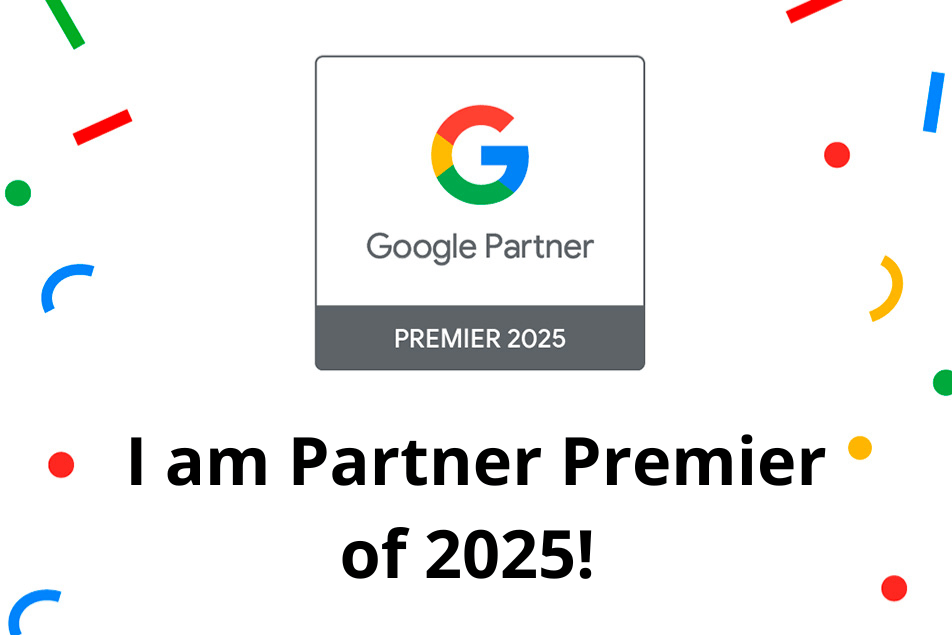
Redegal, Google Partner Premier agency 2025
Five Mistakes That Cripple Your Marketing Strategy While developing a marketing strategy is not an exact science, we often see the same mistakes made over and over when working with C-level executives and marketing departments. Here are five of the most critical mistakes we come across, and how you can avoid them when putting your […]

While developing a marketing strategy is not an exact science, we often see the same mistakes made over and over when working with C-level executives and marketing departments. Here are five of the most critical mistakes we come across, and how you can avoid them when putting your marketing plan together.
“We want to change our website!” and when I ask why, they aren’t sure. They just know they need it. Instinctually, they know their website is ineffective, but they don’t really understand how a better website should translate into an effective marketing strategy that helps them meet their business objectives.

So, rather than focusing on a specific tactic such as a new website, SEO, blog or social media, focus on developing a strategy that meets your goals, and then determine which tactics will be needed to make achieving those goals possible.
Focusing too much on tactics and not enough on strategy is often accompanied by a failure to establish goals and objectives. Do you want a new website to make yourself feel better about your brand, or do you want a new website that caters to the real needs of your customers? Hopefully it’s the latter, but it’s not uncommon for the former to take precedence, and this is a mistake.

How often have you selected marketing collateral that you liked but maybe failed to take into account whether or not your customers would like it? Before thinking about your strategy and the various tactics needed to execute it, determine the goals you want to achieve. These goals might include a lift in brand awareness, increased lead generation, more online purchases, better conversion rate or more in-store footfall, to name a few.
Typically, when goals aren’t established, neither are key performance indicators (KPIs). Failing to define and track the proper KPIs prior to deploying your marketing strategy can make it difficult, if not impossible, to verify whether or not the strategy is successful.
If your goal is to increase brand awareness, the KPIs you track may include increased website visits or social media engagement. If lead generation is a goal, the KPIs you track may include contact form leads and phone calls from your website. If online purchases or in-store traffic is a goal, the KPI you should track is (no surprise here) sales.
Defining your target audience is great, but developing customer personas is even better. The reason for this is that it’s much easier to create a strategy and message that resonates with a persona than a broad target audience.

For example, a slow fashion company targets moms with college degrees who are environmentally conscious, but they create a strategy for Sarah, who is 40, divorced, with four children, has a Master’s Degree, earns a six-figure salary, loves to do yoga and only buys eco-friendly clothes for her family.
As the CEO, I would be much more confident targeting the “Sarahs” of the world with a message that our clothes are sustainable for both her and her family. And although they’re eco-friendly and cost more than fast fashion clothes, she can rest easy knowing that what she (and her family) dress is good for them and the planet. And you can’t put a price on that.
All of your competitors are targeting bottom-of-funnel prospects (prospects who are ready to make a purchase decision), but they are not all targeting top-of-funnel prospects (prospects who are in the research phase of their buying process). This presents a great opportunity for you to capture prospects early in the sales cycle, and at a lower cost as a result of reduced competition.
One of the most effective ways to acquire top-of-funnel prospects is by providing them with answers to their questions. This introduces them to your brand, product/service and also builds loyalty because you’re providing them with perceived value by answering their questions.

Take, for example, the first time you set up a business. A first-time CEO will have many questions around the process of creating a company. Questions they have (and search on Google) may include, “What products or services I will provide?” “What is my competition?” “What is my target?” “Do I have enough resources to create that?” “Will I need a loan?” “How much money do I need to start my business?” “How will I manage my company?”. This CEO needs to search this prospect in any website and social media that could answer these questions.
In conclusion, avoid these critical mistakes when developing your marketing plan by focusing on strategy first and then on tactics, determining your goals, establishing the proper KPIs, targeting customer personas not only in the audience and going after top-of-funnel prospects. If you do these things, you’ll have a consistent, strong and successful marketing plan.
You may be interested in our latest posts

Redegal, Google Partner Premier agency 2025

What is AI Overviews and how will affect SEO?

Bluesky: What is it and how to create an effective strategy

The Super Bowl in a data-driven era
Discover the best digital strategies for your brand
Hi!
We are looking forward to hearing more about your digital business.
Tell us... What do you need?
Fill in the form or call us at (+44) 2037691249